Anyone grow Selaginella lepidophylla?
Has anyone grown Selaginella lepidophylla?
I have heard this plant referred to as the Rose of Jericho, and the Dinosaur Plant. My understanding is that the Rose of Jericho is in the mustard family (Brassicaceae), not Selaginellaceae.
Most of the information I have been able to find is from online sellers trying to win kids and their parents on the appeal of the plant's unusual properties, as well as the Dinosaur Plant name. It seems like the plant version of "Sea Monkeys" given the way it's marketed.
S. lepidophylla seems like it would make a neat addition to a cactus collection, but given my inability to find any serious account of their cultivation, I still have no idea what it might be like to grow one. Anyone have experience with this one?
Comments (158)
Gardenwise
3 years agoVery nice @Nate G.! I would only imagine you need to keep an eye out for mould growth if they are closely covered with plastic...
Nate G.
3 years ago@Gardenwise thank you! Yes definitely, I do my best to keep an eye. I also look and see if there is condensation buildup, and if so I turnover the plastic to make sure they aren't getting wet.
Related Professionals
Andover Landscape Contractors · Fort Mill Landscape Contractors · Harvey Landscape Contractors · Hendersonville Landscape Contractors · Lake Saint Louis Landscape Contractors · Long Beach Landscape Contractors · Middle River Landscape Contractors · Sun Valley Landscape Contractors · Columbus Roofing & Gutters · Hicksville Roofing & Gutters · New Orleans Roofing & Gutters · Frisco Decks, Patios & Outdoor Enclosures · Parker Decks, Patios & Outdoor Enclosures · Port Saint Lucie Decks, Patios & Outdoor Enclosures · Saint Louis Park Decks, Patios & Outdoor EnclosuresVirginia Ramunda-Marty
3 years agoHello everybody! Beautiful to read your posts. I wanted to make a comment about how it's really hard to get these ferns dead. I do not know what one would have to do to them. So, all that about the plants "arriving dead" well... I don't know how they can say or be sure of that. They are just dormant and can remain like this for decades.
Also, they are NOT supposed to have a big root system as they are made to roll, revive with rain, release spores, close up when dry and roll again! 😊
@John Snyder I wonder if you could share with us the type of soil you have on that beautiful desert of yours as I would like to give mine a substrate similar in the hopes of having some spores take in.
Thank you @Nate G. For your pictures and detailed information.
I had mine for 8 years now and I don't take care of the poor thing but she always opens up when I water it or rain gets to it and gets nice. I would really like babies thou 😍
@TERRY FARMILO thank you for educating us all with your experience and pictures. All your pictures are, in my opinion, the right species, S. lepidophylla.
Gardenwise
3 years agoHi @Virginia Ramunda-Marty, If you have kept yours alive for 8 years, you have done very well. Is it fresh green when it opens? They will continue to open and close when they are completely dead, but they will open brown.
Nate G.
3 years agoThanks @Virginia Ramunda-Marty! It seems you are interested in reproducing them! Have you tried propagating from cuttings? I heard that is possible to do so. I may try taking some cuttings from mine when spring comes around for greater chances of success.
kennethreyes109
3 years agolast modified: 3 years agokeep the information flowing! I still haven’t gotten any S. lepidophylla, but I’ll have to try what has worked for you guys. I joined a group of selaginella on facebook, there is a grower there that has successfully grown cuttings of lepidophylla.
CMN R
3 years agosome said these reproduce by spores, how does that work? Do they need a partner plant? like a pollinator of sorts to make the spores fertile? Are the spores safe to breathe if you keep the plant in your home as a houseplant?
Nate G.
3 years agoWell hey there guys! I decided to give an update on one of my specimens. I'm excited to share that there is definitely new growth from the crown!
I took a closer picture of the crown in the middle of October (about a month after I obtained them), and another today, to compare the two. This is about a 4-5 month difference. I tried my best to number each 'frond' to compare the two images easily.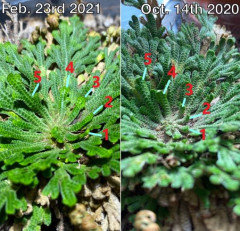
As you can see, each of the 5 fronds have definitely elongated, which is quite cool! I haven't really looked for root growth, but hopefully, since the container is clear, I will be able to see some new roots at some point.
Here are the two images separated to showcase more of the plant.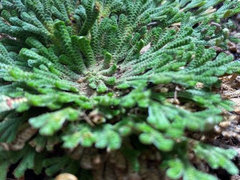

So what have I been doing for care? Well, I haven't exactly changed much from the previous post.Both specimens are still always covered very loosely with plastic wrap. Since the covering is loose, airflow seems to be high to where I don't have mold and they really stay dry most of the time (water doesn't sit in the crown/fronds, soil stays dry). To keep them from drying/closing up, I mist them with distilled water once every day to every other day. The soil stays mostly dry, and I occasionally give it a good mist with distilled water once in a while. They are placed slightly under some grow lights, and not too far from a south/west-facing window. Since it is winter here, days have been cloudy and I haven't been getting much sun.
I'm not sure if this care is good for long-term success yet, but it seems that for now, the specimens are doing well!
Thanks!Gardenwise
3 years agoThanks for the update @Nate G. Interesting. I would be tempted to add a very slight addition of nutrients to the water. They'd be getting more in nature than the equivalent of distilled water.
Ali Ursulich
3 years agoApologies, this is liable to be a really long comment, as I have a lot of thoughts. Takeaway: I essentially have three verified-alive S. lepidophylla plants on my hands to experiment with. (Technically four, but the runt of the triplets is scraggly enough I don't want to do anything sketchy with it.) Gimme ideas, and I'll try to carry them out!
I got 6 plants from Amazon ( https://www.amazon.com/gp/product/B0823L43N2/ ), 4 of which had shallow root systems (an inch or less), and 2 of which had deeper ones (2-3 inches, with lots of compacted dirt). I received them in a dry state, and confirmed that all of them open up and become green in water. The shallow ones seemed to do somewhat better than the deep ones--difficulty with water getting through the dirt ball to the roots, is my assumption. I gave the 4 healthiest-looking ones away to family members.
One of the remaining two plants was actually three plants together like @Nate G.'s, evidenced by each one having their own spiral pattern of leaves. I let that one go dormant and then cut (really snapped, it's a very thick root system) the three apart with a sterile knife, thinking perhaps I might be able to get them to grow separately, like propagating from cuttings. While none of the triplets were healthy to start with (lots of "leaf"-less branches, maybe due to stress when shipping or competition for resources), I tested them again and confirmed that they still go green when given water.
Problem: On all of those 6 plants, they open up and look gorgeous... but leaves never go *fully* green: the tips remain curled up and light tan in color. This seems to be the case with lots of pictures of these, but I'd like to get rid of it. I'm assuming this is lack of some signal to the plant that it's time to really bloom. Light? Temperature? Nutrients?
Problem: On several of the plants, some of the branches and leaves are a much darker brown than the rest, almost black-ish. When exposed to water they turn green, but retain this dark color in between the scales. I worry that this is some kind of mold, and have considered snipping those leaves off to prevent spread. It seems to remain even after extended periods of dehydrated dormancy.
Problem: I gave the triplet plants water again recently for several days, but they seemed weaker than they were previously, and one developed cobweb-looking things in parts of its roots that I assume are some kind of powdery mold. I let them go dormant again to avoid allowing mold to go further. I've heard of using baking soda to deal with powdery mold on other plants, but I want to make sure they're in a good environment before I try that.
My questions:
- Soil. Alkaline sandy soil, based on its natural habitat? Or is hydroponics plenty?- @Gardenwise has a point regarding nutrients: at one point I very cautiously added a tiny amount of Miracle-Gro to the triplets' water, but didn't notice any difference. I'd love some ideas about how to feed them, with what, and in what amounts.
- Light levels. The Planta app suggests it likes shade, and they have been doing alright in my basement, but not *growing*. (Also I think the Planta app might be full of it for this plant, it says it wants high humidity too.) Given it's a desert plant, I would expect it likes a ton of light, so I may get a grow lamp--or plant it on my porch when temperatures get consistently above 50F, where it will get plenty of morning and noon sun. But then there will be summer, which--
- Seasons?? This page suggests letting them hibernate in summer and fall, and grow in winter and spring, but that seems odd. Does it just go dormant in really high temperatures, and grow in moderate temperatures? What counts as "moderate" in its book? The average temp in January in the Chihuahuan desert is 50F, does that work?
- Do they have an internal timer? Which is to say, does the plant expect high temperatures = summer = dehydration and dormancy, followed by low-moderate temperatures = winter = time to wake up? Should I blast my plants with heat as @TERRY FARMILO did, *then* turn down the heat and give them water? Or do they not need the hot period? Can I start trying to make them grow right away, in indoor temperatures?
P.S. It's interesting to hear that so many people here have had such a hard time with them--to hear the witchcraft community, you'd think they all have resurrection plants that are a breeze to care for: keep them in a bowl, change their water daily, give them occasional periods of dormancy to rest, and toss your spare pennies in the water to invite prosperity into your home. I'm guessing they also have relatively short lifespans (someone quoted 2 years, I think, vs 50 that I've heard elsewhere), so those might not be ideal conditions, but they can at least survive that way. Their biggest enemy, supposedly, is mold. Which makes sense--they're obviously not fussy damsels in their natural habitat.
P.P.S. In one of these plants, when I opened it, a small seed of some kind came out of the leaves. I have no idea if it's related: it's light brown, flat, about a centimeter across, with little fuzzy arms all around the edge. A spore, perhaps?focht3
3 years agoI've watched this thread for a few years and reflected on my many trips to Brewster County, Texas, and surrounding areas as well as northeast Mexico. You clearly haven't visited the Chihuahuan Desert in the summer if you think the plant will thrive in the shade in a "cold" room! Dry, hot, precious little shade is the Resurrection Plants' natural environment. At 50 degrees Fahrenheit, you're keeping the plant in a winter environment.
Direct sun, direct water every other month for a few hours, a light misting early in the morning - like dewfall in the desert - and minimal, if any, fertilizer. Beware fungus/mold - it means you've kept the plant too moist or the environment is too humid. Growth will be agonizingly slow, but death can be swift. This will be harder to grow than anything I know. Except children.Gardenwise
3 years ago@Ali Ursulich Those plants that people say live on year after year are probably in fact dead. They still open and close in response to wet/dry for a long, long time after death.
In habitat they grow on gypsum or limestone.
@focht3 has it right about their conditions. There is an abundance of balderdash on the interweb about their care. It is actually evident from their habitat that if anything they should have a cool dry winter rest, and heat and water in the summer. If you Google Images certain cacti, like Geiohintonia or Aztekium, you can actually see them growing amongst them. Here's some good photos too - https://www.inaturalist.org/taxa/168764-Selaginella-lepidophylla/browse_photos
kennethreyes109
3 years agolast modified: 3 years agoThey seem to become weaker if not given enough sun. When they unfurl and turn green the plant expects to have direct light for the amount of time it is open. I suspect by mid afternoon they are already closed to escape the blazing sun/dryness(their moisture is most likely depleted by then). I’ll would probably attempt growing these guys alongside cactus in a gritty mix, sprinkling some lime into the mix to boost calcium and magnesium. They seem to grow on rocky outcrops, which indicate fast draining soils.
Nate G.
2 years agoHey guys, I thought I would do a quick update! It will be a year since I obtained my specimens on September 19th!
The plant has continued to grow. I have not changed a thing care-wise. Even though I wanted to try and fertilize, I just never really tried to do so haha.What's exciting is that both of my specimens have definitely upgraded their root systems, as there are many white fine roots visible at the bottom of each dish (image below)!
Starting today, I decided to move them into my recently set-up grow tent. It's at 75-85% percent humidity all the time, with a MARS HYDRO ts-600 grow light about 3 feet high. There is a fan that creates very good airflow too, so I think mold shouldn't be a problem. I am thinking that this setup should significantly decrease the need for once-a-day misting, while still keeping them open at all times.
Hopefully, things will continue to go well! I am just amazed at what has happened so far!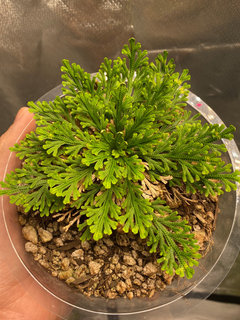

Gardenwise
2 years agoThat is amazing @Nate G.! I envy you!!! There's really no way I could get hold of a healthy plant now in an affordable way. Maybe with a lot expenditure and effort, but I'm not yet a millionaire. They produce spores though. How about you catch some and send them to me in the UK 🤣. No phyto certificate needed.
I'm not so sure your new setup would work. It seems they need wet/dry cycles to be healthy, rather than constant humidity. All I would say is proceed with caution. Maybe only put one into the new setup?
Nate G.
2 years agoHey @Gardenwise! You know, maybe it would be possible to obtain spores, though I have no experience in identifying when and how to get ahold of them. If you have any information regarding that, I'm all ears!
As for the setup, that definitely makes sense and is a good idea. I will do that, and maybe just let them dry out completely when winter approaches, and revive them back next spring?Gardenwise
2 years agoWell, let's google "selaginella spores"?
As for the month-by-month treatment, as you may well have gathered by now, I have very little real experience. I could only imagine trying to emulate their habitat experiences? 🤷♀️🤷♂️
focht3
2 years agolast modified: 2 years agoWell done, Nate! It seems you've done well in imitating their natural habitat. By misting daily, you've managed to keep them open - and growing - for quite a long time. I'm impressed.
Don't screw it up now.
I understand your desire to reduce the effort. I really do. But I'm not a fan of your proposed setup. How do you plan to combat the inevitable mold and mildew growth? Drip irrigation in a well-draining bed of gravel might (might) be a better approach. An automated mister would provide the best option if you can find/rig one up. Here's a link to one I found: https://tomwilson.com/2020/05/automated-houseplant-misting-system.html/
Please keep us posted.focht3
2 years agoNate -
Have the 'creeping stems' of the plant developed roots? If so, you're well on your way to propagating more plants!Nate G.
2 years agoHi @focht3! I am impressed myself haha!
Well, I was thinking that the high airflow would keep mold away, especially since the soil would still remain dry at most times. But, I can definitely see your point, and an automatic mister is a great idea. I will have to think about what I can do.
None of the stems have roots. But since this relates, some months ago I took a 2 inch or so cutting to experiment. I put it into one of my propagation boxes, which consists of just sphagnum moss in a plastic storage bin (I use it to propagate various philodendron and other tropical plants). It is always moist, and I air the box out once a day.After some time, it started to grow roots. Over time though, while the tips of the stem showed some growth, it continued to downgrade in health and is now looking mostly brown and not too happy (current status images attached).
I may need to try another method.
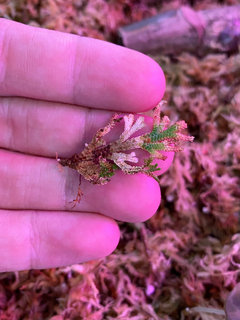

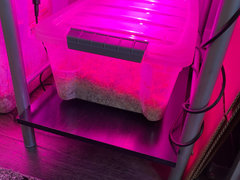
Gardenwise
2 years ago@Nate G. I would suggest to treat the cuttings exactly the same as the adults - with just an increment more water. You know how it's scarcely believable how many aroids do not like a lot of water? How it takes some real getting used to that they practically need watering like succulents? I suspect it's a similar situation with these cuttings...
Gardenwise
2 years agoThey may also have not liked the acidity of the sphagnum, as they grow on either neutral gypsum or alkaline limestone.
focht3
2 years agoI'd suggest sticking with a crushed limestone, not gypsum. The limestone (calcium carbonate) will be slightly basic while gypsum (calcium sulfate) may be slightly acidic as they weather. I don't know where you live, but if your local concrete batch plants use crushed limestone as aggregate you should be able to get "fines" (dust that isn't used otherwise) for free. It will range from fine sand to silt in size, so it's already soil-like. Warning: it may tend to "self-cement" as it dries! But you can put it in the oven at about 250 degrees for a few hours and it should be easy to break up/pulverize. Put the dried material in a ZipLoc (double-bagging is better) and use the wood handle of a hammer to break it up, if needed.
My background is a part of civil engineering called geotechnical engineering. I deal with the engineering properties and behavior of soils, rock, and the structures that bear on or support soil or rock. I get paid to play in the dirt!Gardenwise
2 years agoThese plants grow naturally on both limestone and gypsum, so it shouldn't matter which you use. I'm not sure about gypsum ever being anything other than overall neutral......?
focht3
2 years agoThere isn't very much exposed gypsum (calcium sulfate) in the Big Bend country near the ground surface. The exposed sedimentary rocks contain carbonates (limestones and chalks), chert-based gravel, silica sands, and silts of various mineralogies. And there are lots of igneous and metamorphic rocks, too. But not much sulfates. They weather pretty easily.
Mia Congress
2 years agolast modified: 2 years agoI just found one too. It seems to already be growing since I see a small green branch that‘s coming up from the seed curling a bit. Any updates on how it’s doing? I’m really wanting this one to grow since my original plant is not doing great at all hah. Also sorry for the bad quality, my phone won’t focus for anything >~<

Gardenwise
2 years ago@Mia Congress This article https://www.biologydiscussion.com/pteridophytes/selaginella-habitat-reproduction-and-life-cycle/53199 states that Selaginella megaspores are 1.5 to 5mm in diameter, which means in theory your "brown dot" could be one. But unfortunately, yes, the photo is not clear enough to say what it is.....🤔......
Mia Congress
2 years ago@Gardenwise I ended up finding like 5 more. Two (including that one) all of them have already started to grow if they’re megaspores. Also, you’re gonna laugh, my camera quality is so bad that it’s not really brown, it’s more like a cream color with green sprouting from it😂😂 Then again I took the picture at like midnight… Or 2 am…. idk lol
Gardenwise
2 years ago@Mia Congress I really hope you've got spores there. What a great experiment to try to grow them.
I've ordered one plant from some dubious source. I'm expecting it to be dead, but I'll give it a good check over for megaspores.
Gardenwise
2 years agoI wish I could buy one @John Snyder, but the costs and logistics of getting it over to the UK from USA now would mean I'd need to be a millionaire, and hope for a miracle getting it through customs. Things still have not settled down here since Brexit.
John Snyder
2 years agoI do understand, My daughter lives in London and it costs a small fortune to send packages there.
Tri Tran
2 years agoJust got two of them from @John Snyder.
I hope they will survive.
I don't have grow light, tent stuff like @Nate G. and it is freezing cold with snow in my state so It will be difficult to keep them out of dormant, I probably will place them in small room like bathroom so the heater can keep the temperature right.

Tri Tran
2 years agoAfter 5 hours sitting in water, I place them in soil, mist them and cover them like @Nate G. do.

The next morning, they almost fully open, I discover that the small one is a duo and the big one is cluster of 4 plants, a quartet!!! I only buy 2 plants from John but it turn out to be 6 plants 🤣
BUT there's one problem, I see some white hair-like fiber under some leaf, MOLD!!! I bet it is because of the rain water I use to mist them ( since I have no distilled water and tap water in my state is full of mineral stuff) and the dead leaf's sponge like structure that hold water causing mold to grow.
I go to Lowe's to buy some limestone and put them in the soil and also remove some dead leaves to prevent mold. Ordered grow light on Amazon but it won't arrive til next week, so I use aquarium led light for now.
I also found another plant in the garage that my lil sis bought before, it look so pale brown and I don't think it is alive, but I will give it a try and see if the core is somehow alive.
Since I don't have a tent to keep the humidity high, I will use a small aquarium as alternative and barely cover them to increase the humidity.
(To be Continue)Gardenwise
2 years ago@Tri Tran You'll get mould if you cover them closely. There's no way to protect them from that. They will already have plenty of mould spores on them! They just need air circulation. And periodic drying out to some extent may prevent mould.
Tri Tran
2 years ago@Gardenwise Yup I know that and I only cover them loose after soaking and currently half the aquarium. It is raining the day they arrive so the soil is completely wet, I was trying to press and squeeze water out before put them in but it still very damp. Seem like I need to dry out the big one for a day, the small one doing fine without any mold.
Thank for your advice :)
Tri Tran
2 years agoWell, pretty late update, but here I'm.
The small one that consist of two plants, both doing pretty good as it leaf grow a little longer and bright green. There are also root grow but not much.
I probably need trim the outer dead leaf so it have more room to grow.

For the large one that consist of four plants... well... not so good I guess, I think it is dead since is all pale in color.

All I do is put them near the window, cover them loosely with plastic wrap, spray them once on cloudy and twice on sunny day. No fertilizer I'm not sure if it strong enough yet.
They don't get much sun since it is winter in Ohio, mostly cloudy day. So I think the big one doesn't get enough energy from the sun and die.
Well, I will keep the big one for some more time to see if miracle will happen 🤦♂️Antonio Aldo Tony Papaleo
8 months ago@ Gardenwise i did a quick research and seems to me its perfectly possible to buy Selaginella directly in UK... or I am missing something?
Gardenwise
7 months agoHi @ Antonio Aldo Tony Papaleo . Sorry for the delay, this got lost in the madness of life. Yes, you can buy S. lepidophylla in the UK, but they are either dead or dying.
Antonio Aldo Tony Papaleo
7 months agook so only USA specimen are ALIVE? its due to nationality, genetics or?
Antonio Aldo Tony Papaleo
7 months agoI have many in my italian garden and they are on place since 1970. I wonder if they come from USA and if i need certificates to ship them from UE to UK! Come on... it seems me silly jokes!
Gardenwise
7 months ago@ Antonio Aldo Tony Papaleo . The import regulations may be a joke, or not. It's very uncertain. But they are there, they are a fact.
I do not know which specimens are fully alive.
I would love to import truly living plants from you into the UK, but the Phytosanitary requirements make it very difficult. Unless you can get a phytosantary certificate easily and cheaply?
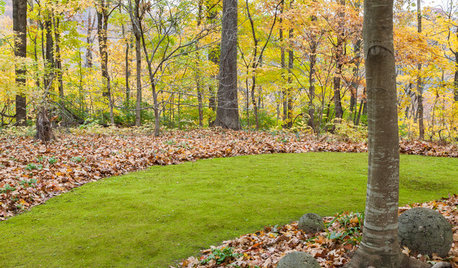






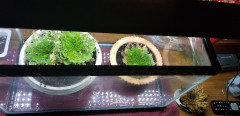
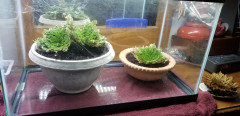
Gardenwise